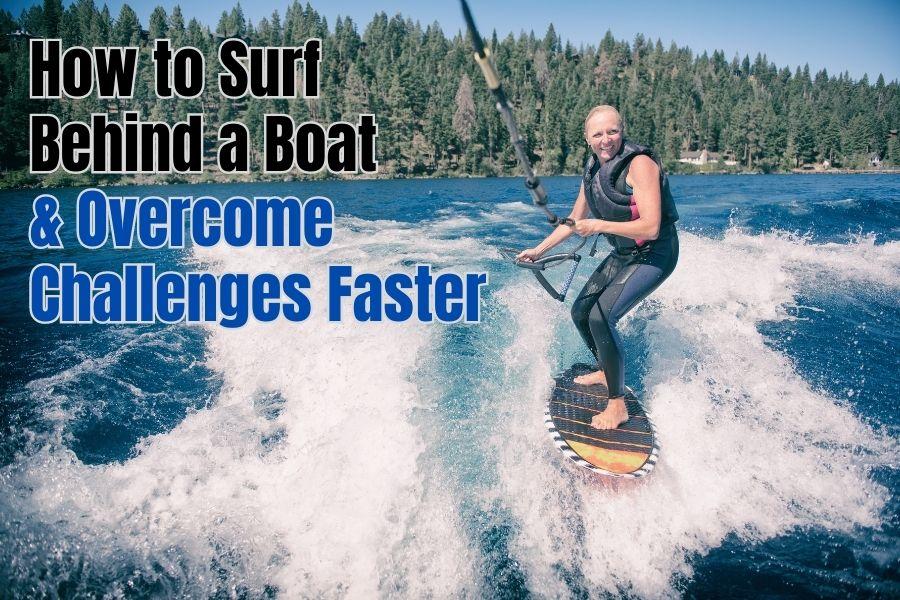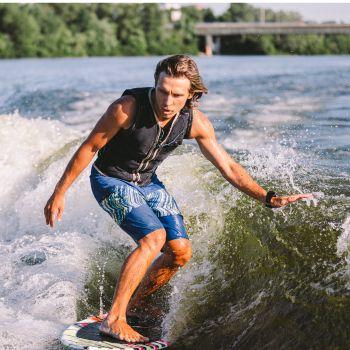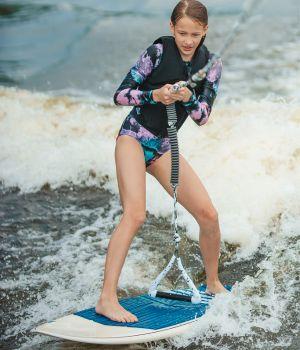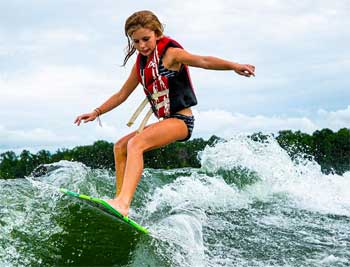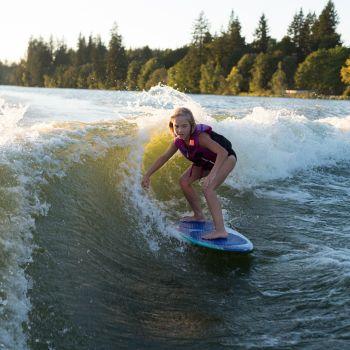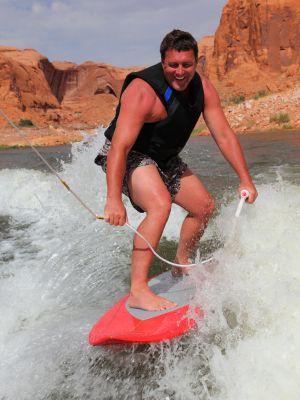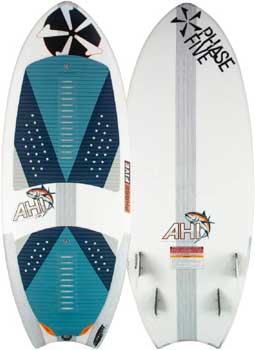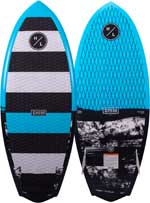Learning to wakesurf may seem daunting at first, but with the right approach and determination, you’ll be riding the wake like a pro in no time. Below, we’ll show you how to surf behind a boat, from overcoming challenges to dealing with frustration and progressing faster. Let’s get started…
Overcoming Challenges When Learning to Wakesurf:
1. Finding the Sweet Spot:
The key to successful wakesurfing is finding the “sweet spot” behind the boat, where the wake is clean and offers the ideal push for surfing. Experiment with your positioning to find the spot where you feel the most comfortable and can maintain balance easily.
2. Getting Up on the Board:
As a beginner, getting up on the wakesurf board can be a challenge. Start by placing the board perpendicular to the wake and with your knees bent. As the boat accelerates, gradually stand up while keeping your weight centered and leaning slightly back. The boat’s forward motion will generate the necessary lift to get you on your feet.
3. Staying in the Wake:
Once you’re up on the board, the next challenge is staying in the wake. Maintain a low center of gravity and use your knees to absorb the waves’ energy. Avoid standing too upright, as it can lead to losing balance and falling off the wake.
Dealing with Frustration and Progressing Faster:
1. Be Patient with Yourself:
Wakesurfing is a skill that takes time to develop. It’s normal to face challenges and even fall several times while learning. Here are some wakesurfing tips for beginners. Be patient with yourself and celebrate small victories along the way. Remember, every fall is an opportunity to learn and improve.
2. Seek Guidance from Experienced Wakesurfers:
Learning from experienced wakesurfers can significantly accelerate your progress. They can offer valuable tips for keeping your balance, correct your form and provide insights to overcome specific challenges. Don’t hesitate to ask for help or take lessons from a professional wakesurf coach.
3. Practice Regularly:
Consistent practice is key to mastering wakesurfing. Try to get on the water as often as possible, even if it’s for short sessions. Regular practice helps build muscle memory and improves your overall skills.
4. Record and Review Your Sessions:
Recording your wakesurfing sessions on video can be immensely helpful. Review the footage to identify areas for improvement, such as body positioning, balance, and technique. Analyzing your performance will enable you to make targeted adjustments and progress faster.
FAQ About Surfing Behind a Boat:
Q: What is the minimum age to start wakesurfing behind a boat?
A: There isn’t a strict minimum age for wakesurfing, as it largely depends on the child’s swimming ability, confidence, and coordination. However, it’s advisable for children to start wakesurfing around the age of 7 or older, under proper adult supervision.
Q: Do I need to be an experienced surfer to wakesurf?
A: No, wakesurfing doesn’t require any prior surfing experience. It’s a sport that caters to all skill levels, from beginners to advanced riders. As long as you’re comfortable in the water and have basic swimming skills, you can learn to wakesurf behind a boat.
Q: Do I have to wear a life jacket while wakesurfing?
A: Yes, wearing a life jacket is essential for wakesurfing. Although you’re not directly towed by a rope, accidents can happen, and a life jacket ensures your safety in case of a fall or collision. Opt for a wakesurf-specific life jacket that provides buoyancy without restricting your movement.
In Conclusion:
Wakesurfing is a fun sport, however, finding the sweet spot and getting up on the board can require patience and persistence. Enjoy the learning process and listen to tips from experienced riders, and you’ll be standing and surfing sooner than you think.

